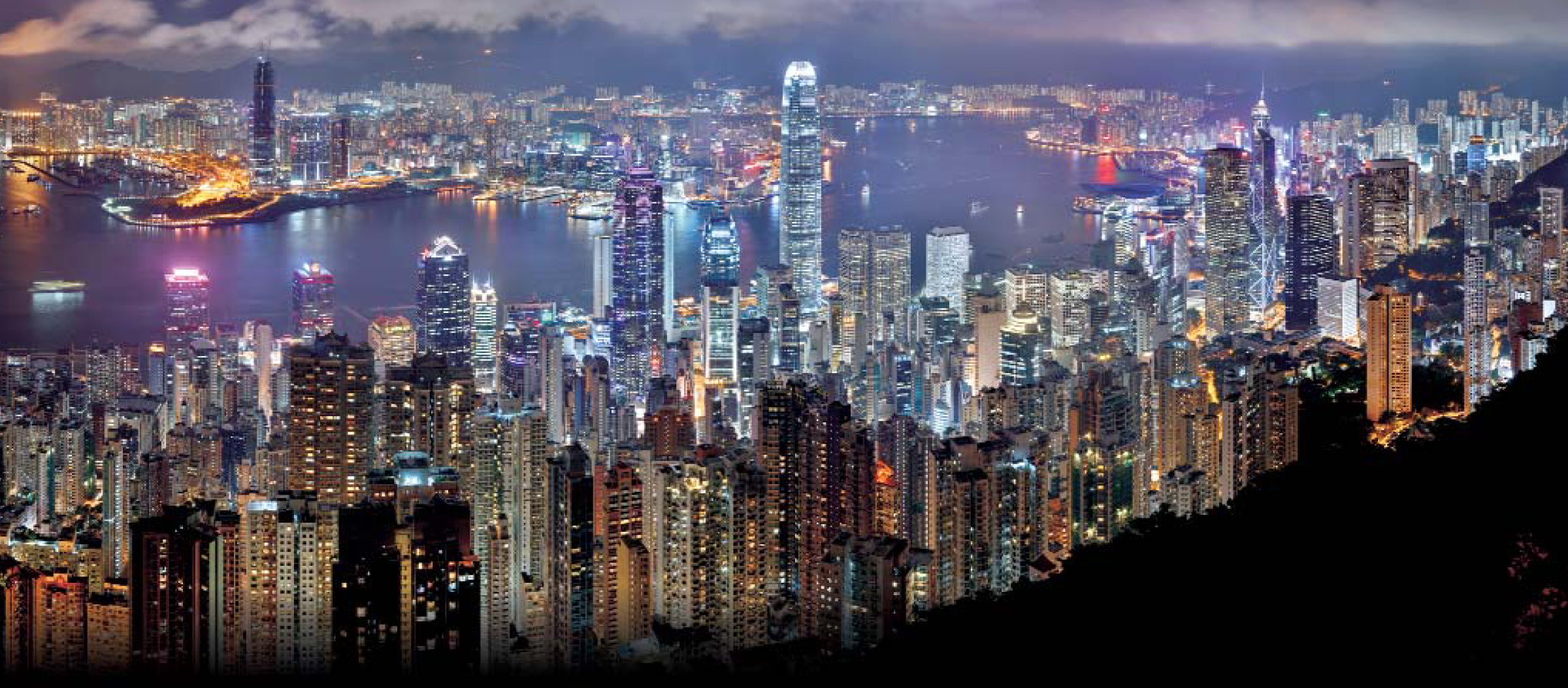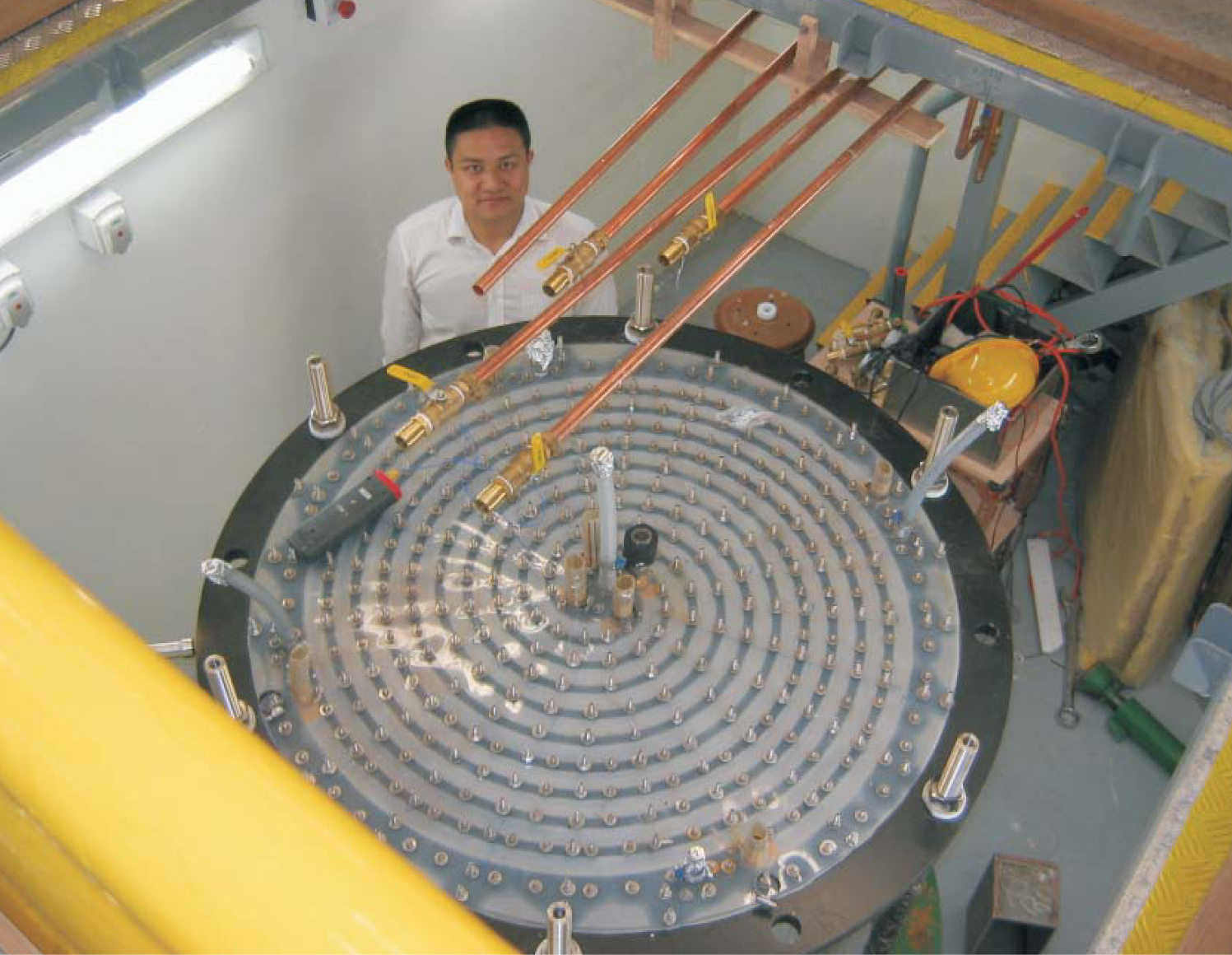Physics flourishes in Hong Kong
DOI: 10.1063/1.2982112
On 14 April, Hong Kong’s condensed-matter theorists gathered at Hong Kong Baptist University (HKBU) to discuss a new family of iron-based superconductors. The discovery, published barely two months earlier, had touched off an explosion of research activity (see Physics Today, May 2008, page 11
Visitors from the US and mainland China joined the locals. Three of the participants, the University of Hong Kong’s Fuchun Zhang and Zidan Wang and Stanford University’s Shoucheng Zhang, had already posted their respective proposals for the pairing symmetry on the arXiv e-print server. Jianxin Li of Nanjing University brought news of the latest results from mainland China, where experimenters were leading the race to make, characterize, and understand the superconductors.
The meeting at HKBU epitomized the current state of physics in Hong Kong. Condensed matter is one of the territory’s strengths, as is cooperation and coordination among its physics departments. And, from its establishment as a British colony in 1842 through its return to China in 1997 to today, Hong Kong serves as a place where China and the West exchange not only goods and services but also ideas.
Thanks to those qualities, physics in Hong Kong is flourishing. Last year, authors from Hong Kong published more papers in Applied Physics Letters than authors from Switzerland, whose population is about the same. But as recently as the early 1990s, despite the territory’s rich economy and competitive ethos, Hong Kong’s research enterprise was puny. Universities focused on training lawyers, doctors, and other professionals.
Upgrading universities
Nai-Ho Cheung had just $1000 a year to fund his research in laser-based analysis when he joined HKBU’s physics department in 1981. The contrast between now and then is stark: “Like heaven and hell,” he says.
The transformation began largely at the behest of two men: Sze-Yuen Chung, an industrialist and politician, and Edward Youde, the 26th governor of Hong Kong. By the early 1980s, Hong Kong had grown rich thanks to booms in manufacturing and construction. In 1979 China’s paramount leader Deng Xiaoping created a capitalist enclave in Shenzhen, a city that abuts Hong Kong’s border with the mainland. China’s economic rise began. Investment flowed from Hong Kong to Shenzhen; factories and manufacturing jobs followed.
To secure its continued prosperity, Hong Kong had to compete with its new, rich-country peers in a knowledge-based economy. More and better-educated graduates were needed. Hong Kong, as Chung, Youde, and others realized, needed to upgrade its university system.
The upgrade took several forms. In 1991 a new university, Hong Kong University of Science and Technology (HKUST), opened on a tree-lined campus overlooking Clear Water Bay. In 1994 two former technical colleges were raised to university status: the Hong Kong Polytechnic University (PolyU) and City University of Hong Kong (CityU).
To fund research at the new and old universities, Hong Kong created the Research Grants Council. Modeled on the UK’s Science and Engineering Research Council, the RGC awards grants by competitive peer review. It routinely sends proposals to reviewers in the US, the UK, Japan, and other countries. Outside reviewers help to ensure that Hong Kong’s research aspires to and meets world standards.
In beefing up university research, Hong Kong’s goal was not so much to foster ties with industry, although that has happened. Rather, as Kenneth Young of the Chinese University of Hong Kong (CUHK) recalls, “We needed credible universities.” Hong Kong also saw a marketing opportunity: to become a higher-education hub for southern China.
As if to reflect Hong Kong’s free-market spirit, the RGC did not stipulate what science it would fund. The size of a typical grant, now about $35 000 per year, does, however, limit what equipment a researcher can buy. On the other hand, the modest level of RGC research grants means that more—about half—can be awarded.
Without any guidance from above, what sort of physics has developed? Condensed matter, optics, and materials science, are all represented in one form or another in Hong Kong’s six physics departments. Fluid dynamics, device physics, and astrophysics also feature.
Particle accelerators, fusion reactors, space telescopes, and other big-science projects are beyond Hong Kong’s means. Moreover, Hong Kong is one of China’s Special Administrative Regions, not a sovereign nation. It can’t join and help fund international consortia such as the International Thermonuclear Experimental Reactor. Nevertheless, Hong Kong physicists do participate in international projects, as members of their universities.
For example, the University of Hong Kong (HKU) and CUHK are among the 33 institutions from five countries working on the Daya Bay Reactor Neutrino Experiment (see Physics Today, December 2007, page 28
The relationship between the physics communities of Hong Kong and the rest of China reflects Hong Kong’s special status. Since the 1997 handover to China, the former colony has operated under Deng’s doctrine of one country, two systems.
Hong Kong has retained its legal system and civil service, and it doesn’t contribute tax revenue to mainland China. As a consequence of Deng’s doctrine, Hong Kong receives no research funding from China, the world’s third biggest economy.
Personal ties
Scientific ties between Hong Kong and the rest of China are more evident at the personal level. Just over half of HKUST’s physics faculty, for example, come from the mainland. Ping Sheng, who recently stepped down as chair of HKUST’s physics department, sits on advisory committees at several mainland universities. Until 1998, Nobelist C. N. Yang directed CUHK’s Institute of Mathematical Sciences. Now he’s a professor at Tsinghua University in Beijing and a distinguished professor-at-large at CUHK.
China’s relationship with Hong Kong also affects another area in which physicists play a role: industry. Beginning in the 1950s, Hong Kong’s manufacturing industry grew rapidly. Because local entrepreneurs found it difficult to borrow large amounts of capital, light, low-tech industry developed. Without government support, high-tech industry on the scale that developed in Taiwan and South Korea never took off, even after Hong Kong’s manufacturing industry moved to China. Now Hong Kong’s economy is one of the least industrialized in the developed world. Manufacturing contributes 4% of GDP; services employ 83% of the workforce.
Still, ties between physics and local manufacturers do exist. HKBU’s Kok-Wai Cheah, for example, develops LEDs in collaboration with Clover Display Ltd, Varitronix, and other companies. At PolyU and CityU, faculty members act as paid consultants for manufacturers in Hong Kong and the mainland.
Some universities are also forging ties with the financial sector. In June, CityU announced the establishment of a climate impact center. Funding for the center comes from Guy Carpenter & Co, a reinsurance broker based in New York City.
Even without extra income from consultancy, physicists in Hong Kong earn salaries comparable to those in the US and higher than in most European countries. Wang Yao is the newest member of HKU’s physics faculty. When he was a postdoc at the University of Texas at Austin, he applied for tenure-track positions in Singapore, Hong Kong, and the US. HKU prevailed, in part because of the salary, but also because Yao’s wife, a corporate lawyer, could easily find work. And, says Yao, “Hong Kong is not isolated. You can feel connected to exciting discoveries all around the world.”
Hong Kong is also attractive to physicists visiting from abroad. Itamar Procaccia of the Weizmann Institute of Science in Rehovot, Israel, is a frequent visitor to CUHK. Besides the science, he cites as attractions Hong Kong’s convenient location for exploring Southeast Asia, the efficiency of its infrastructure, the use of English, and the food. “Cantonese food is the best in the world,” he says.
To improve its competitive position further, Hong Kong is pushing ahead with more changes. The economy has boomed in recent years, allowing the RGC to establish a $2.3 billion endowment fund for research. And in 2012, the entire university system will switch from offering English-style, three-year degrees to more internationally attractive US-style, four-year degrees.
As a result of the switch, the number of undergraduate students at Hong Kong’s universities will increase by 33%. Building programs are under way to accommodate the impending influx.
The switch to US-style degrees will bring another challenge to physics departments: teaching large service courses. Helen Chan, who chairs PolyU’s applied physics department, sees service courses as an opportunity to expose nonmajors to physics. She and her colleagues also promote physics to high-school students through lectures and workshops. “We need to tell them what a career in physics is like,” she says.
Chan herself decided to become a physicist when she was in high school. Her inspiration was a public lecture that C. N. Yang gave at Hong Kong’s city hall.

Looking North from Victoria Peak on Hong Kong Island you can see the skyscrapers of the central business district and, across Victoria Harbour, Kowloon.
(Photo courtesy of Samuel Louie, Diocesan Boys’ School, Kowloon.)


Experimental fluid dynamics is one of the strengths of the Chinese University of Hong Kong and Hong Kong University of Science and Technology. Here, Li-Yuan Ren, a graduate student in Ke-Qing Xia’s group at CUHK, stands beside a tank he built to investigate Rayleigh–Bénard convection.
Charles Day

More about the Authors
Charles Day. American Center for Physics, One Physics Ellipse, College Park, Maryland 20740-3842, US .




